
Roots
The very strands that crown our heads hold within them a deep, resonating memory, a vibrant archive of lineage and belonging. To understand the cultural meaning woven into textured hair adornments, one must first feel the silent narrative held within each curl, coil, or wave. This is not a superficial examination of aesthetics; it is a journey into the ancestral core, where the biological blueprint of textured hair meets the enduring spirit of human expression.
Before the whispers of history were penned, before scientific classifications sought to categorize, there existed an innate understanding of hair as a living, sacred entity, a conduit to the divine and a clear marker of one’s place in the cosmic dance. Our exploration begins here, at the foundational truths that root hair adornment in something far grander than fleeting fashion.

The Sacred Physiology of Textured Hair
The unique anatomical structure of textured hair—its elliptical cross-section, the varied curl patterns, the way its cuticle layers lie—is not merely a biological fact. It is a testament to the planet’s diverse environments and the ingenious ways human bodies adapted across centuries. For many ancestral communities, this distinctive quality was a source of reverence, a physical manifestation of connection to land and spirit. The resilience inherent in its structure, its ability to compress and expand, to hold shape in intricate designs, mirrors the resilience of the people who wear it.
Early communities observed these qualities, recognizing a powerful symbolism in hair’s natural form. This observation led to practices of care and adornment that were not simply functional but steeped in a worldview where the physical and spiritual realms were inextricably linked.
Textured hair, in its very structure, carries the echoes of ancestral wisdom and environmental adaptation across generations.

Early Societies and Hair’s Expressive Language
Across ancient civilizations in Africa, hair was a powerful medium of communication, a visual language understood by all within a community. Long before written scripts became widespread, hairstyles and their accompanying adornments conveyed a wealth of information about an individual’s identity, social standing, age, marital status, and even their spiritual beliefs or tribal affiliations. This silent dialogue was a cornerstone of social cohesion. The meticulous shaping of hair into complex designs often required hours, a communal act that fostered intergenerational bonding and transmitted knowledge of tradition and heritage.
Consider the practices of ancient Egypt, where hair adornments were highly symbolic. Elaborate wigs, often crafted from human hair, wool, or plant fibers, were adorned with Gold, Beads, and other precious materials, signifying wealth, social hierarchy, and religious devotion. The more detailed and decorated the wig, the higher the individual’s social ranking.
Young girls wore distinctive “side-locks” to symbolize youth, while married women and priestesses sported more structured styles, linking them to deities like Hathor, the goddess of fertility. This demonstrates how deeply intertwined hair and its embellishments were with the fabric of society and belief.
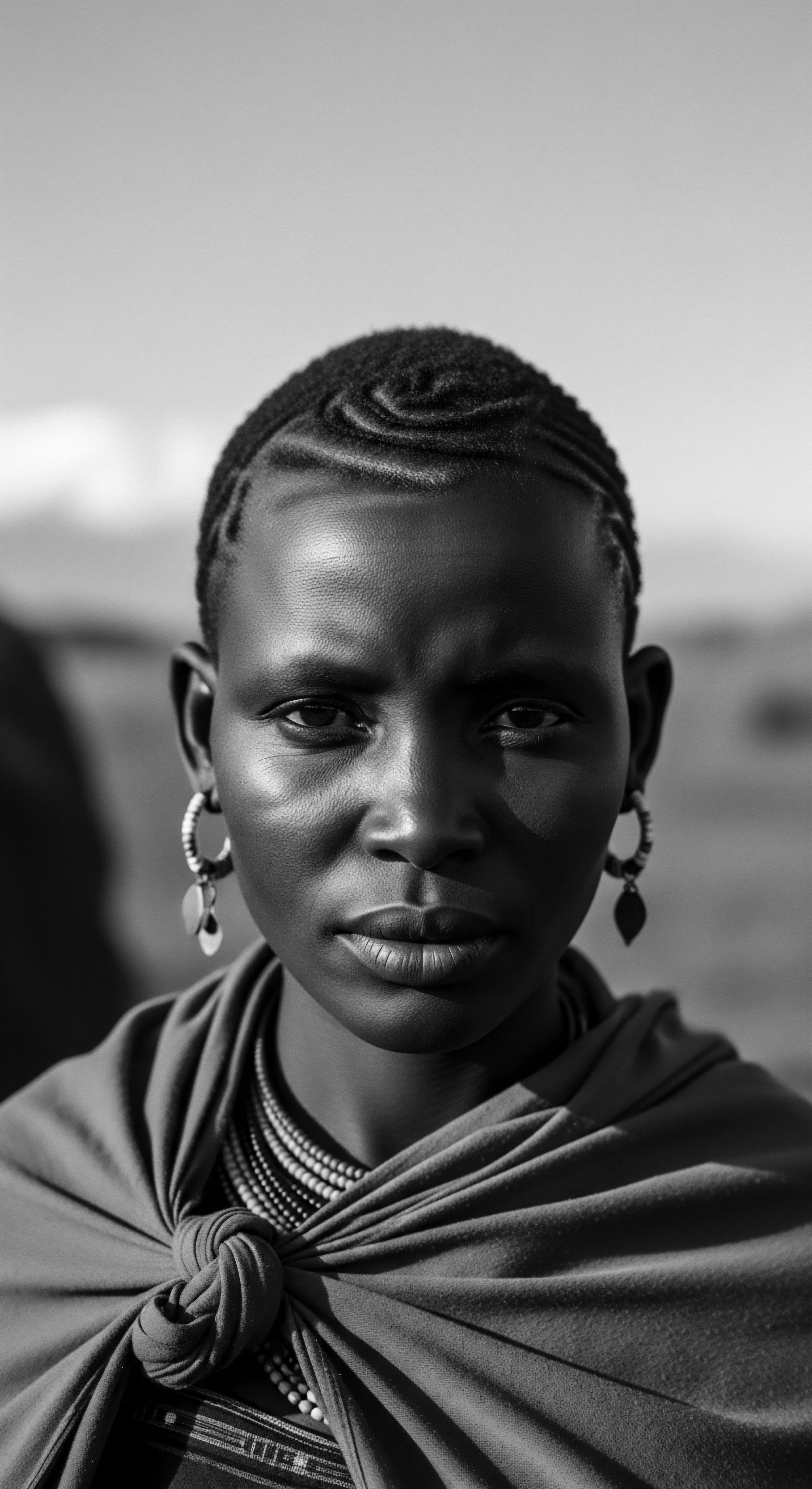
How Did Hair Adornments Reflect Social Standing?
In pre-colonial West Africa, adornments often served as visual markers of social standing and communal roles. An individual’s coiffure, often augmented by various decorative elements, could immediately tell a knowledgeable observer about their place within the social order. For instance, among some communities, the inclusion of certain types of beads or shells indicated wealth or readiness for marriage.
A Fulani woman, for example, might adorn her intricate braids with Cowrie Shells and beads to represent both heritage and marital status. The deliberate application of these elements was not random; it followed established patterns that communicated clearly within the community.
| Community/Region Ancient Egypt |
| Adornment Material/Style Gold, beads, elaborate wigs |
| Cultural Meaning Transmitted Wealth, social hierarchy, divinity, age, marital status |
| Community/Region Yoruba People (Nigeria) |
| Adornment Material/Style Coral beads as crowns (okuru, erulu) |
| Cultural Meaning Transmitted Leadership, spiritual connection, royalty in ceremonies |
| Community/Region Maasai People (East Africa) |
| Adornment Material/Style Beads, animal hair plaits |
| Cultural Meaning Transmitted Wealth, status, rites of passage |
| Community/Region Fulani Women (West Africa) |
| Adornment Material/Style Cowrie shells, beads on braids |
| Cultural Meaning Transmitted Heritage, marital status, familial connections |
| Community/Region These examples highlight how adornments served as a non-verbal language, cementing social structures across African societies. |
The materials chosen for adornment often carried inherent cultural weight. Cowrie Shells, for instance, were a significant form of currency in many parts of Africa and thus represented wealth and prosperity. Their presence in hairstyles spoke volumes about the wearer’s economic standing or potential. Beyond monetary value, cowries also symbolized protection, fertility, and a connection to oceanic spirits, rendering them multi-layered symbols of prosperity and spiritual well-being.
Similarly, Gold Nuggets were worn as amulets in Nubia, signifying not just economic value but also a sacred connection to the sun god, Amen-Re. This underscores that adornments were rarely chosen for mere visual appeal; they were extensions of a deeper worldview.
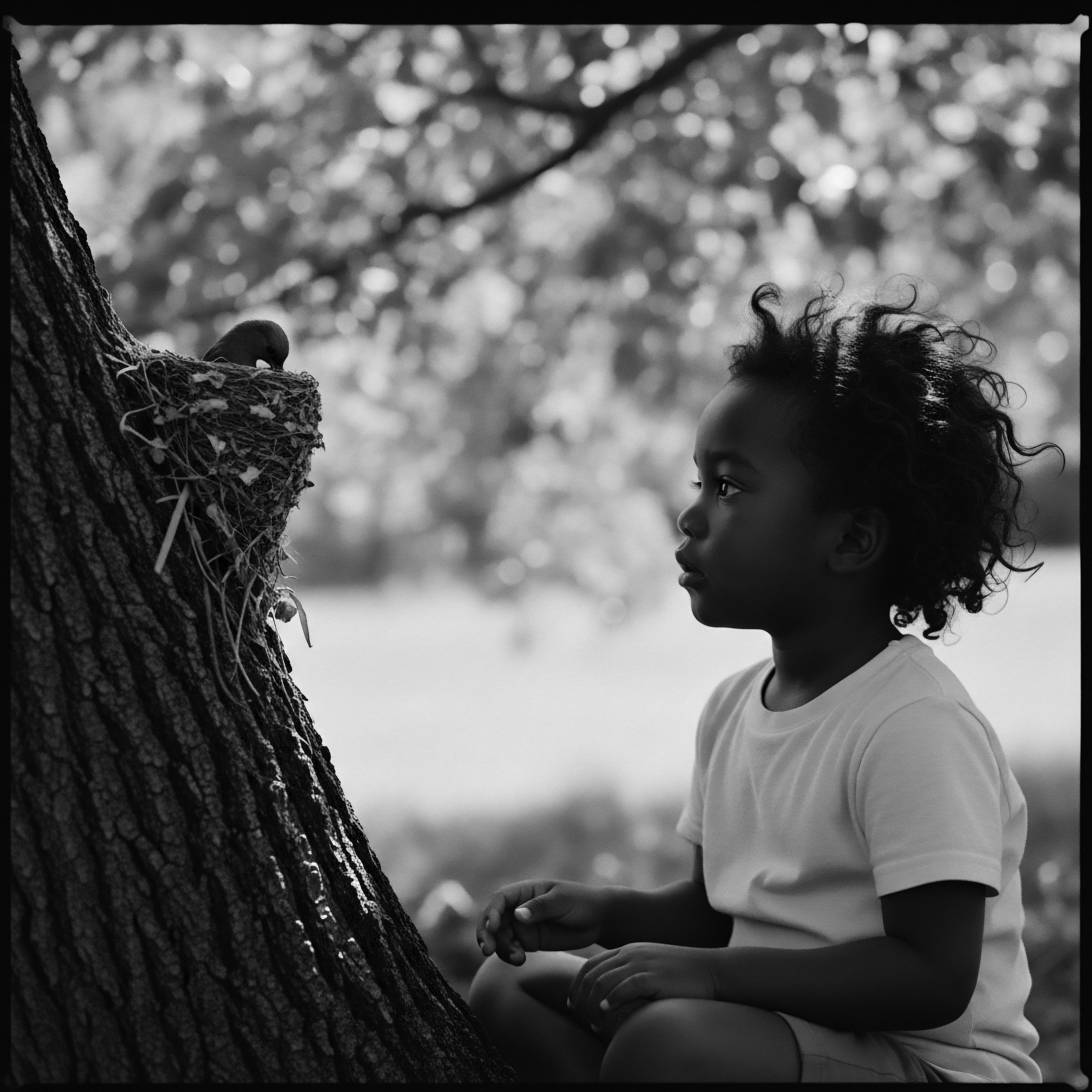
Ritual
The act of adorning textured hair extends far beyond the mere application of decorative elements. It embodies a rich tapestry of ritual, a daily or ceremonial practice steeped in ancestral wisdom and communal bonding. This daily care, the meticulous braiding, the careful placement of shells or beads, transforms a routine into a deeply meaningful interaction with one’s heritage.
The hands that style are not simply beauticians; they are custodians of tradition, passing down not just techniques but also the stories, songs, and spiritual significance that reside within each coiffure. The cultural meaning behind textured hair adornments is intrinsically tied to these living rituals, which bridge the past and the present with every strand tended and embellished.
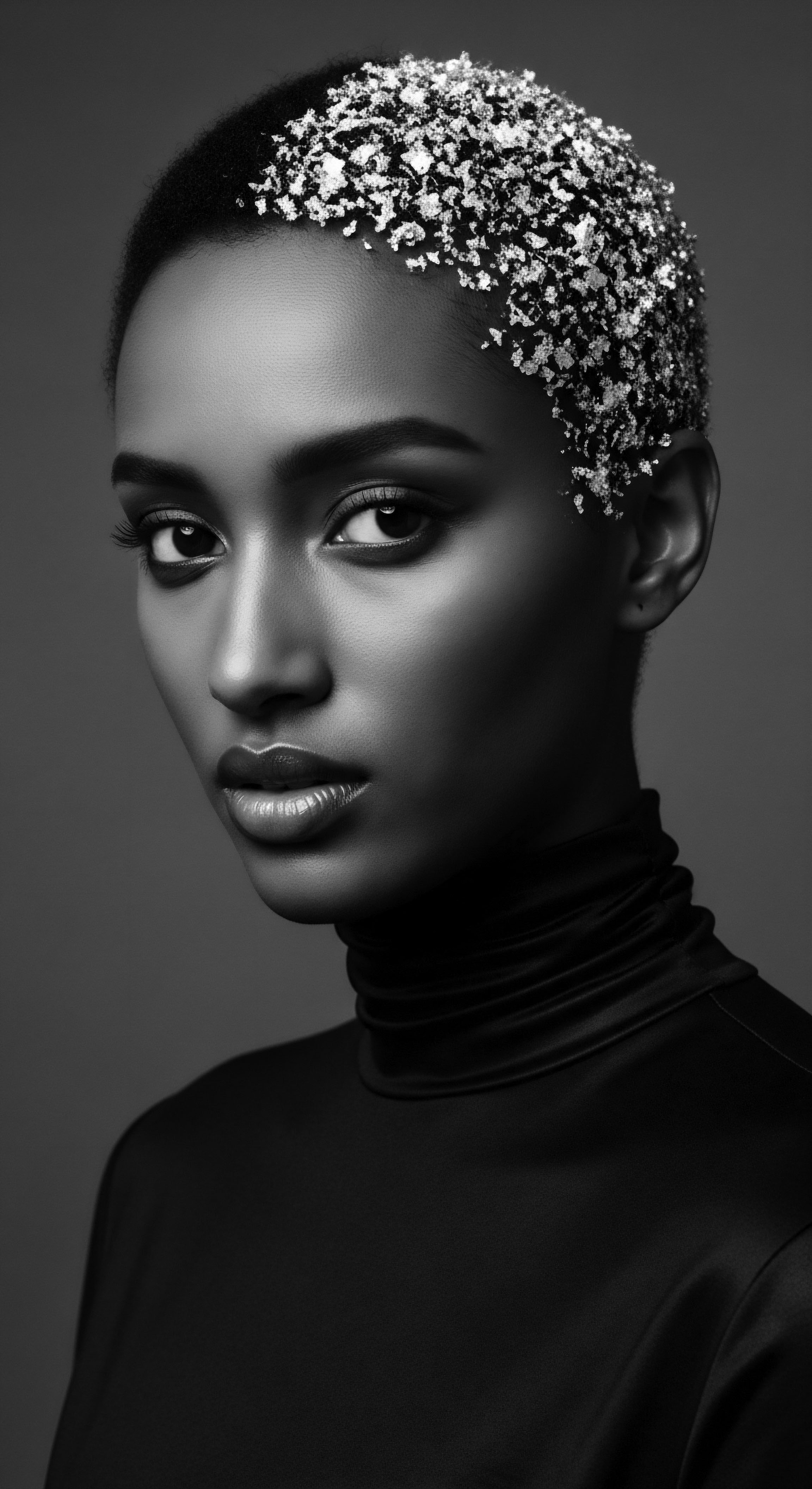
The Communal Spirit of Hair Practices
For generations, hair styling in Black and mixed-race communities has been a communal affair, often taking hours or even days. This was not a solitary task but a social gathering, a time for sharing stories, transmitting cultural knowledge, and strengthening family bonds. Sitting between a relative’s knees while their fingers worked magic on your scalp, learning about ancestral techniques and the meaning behind certain styles, was a fundamental part of upbringing.
The adornments themselves—the beads clicked into braids, the shells carefully positioned—became tangible elements within this shared experience, physical markers of collective identity and tradition. These gatherings underscored the idea that hair, and its adornment, was a community asset, not solely a personal one.

What Role Did Hair Ceremonies Play in Communities?
Beyond daily styling, specific ceremonies and rites of passage often centered around hair and its adornment. These moments marked significant life transitions, from childhood to adolescence, from singlehood to marriage, or the assumption of leadership roles within a community. The transformation of hair, often accompanied by the addition of particular adornments, publicly acknowledged and celebrated these shifts.
For example, in some South African communities, Box Braids adorned with Beads indicated wealth and readiness for marriage. The symbolic weight of these adornments was profound, guiding community members through their life journeys and reaffirming their connection to shared heritage.
Hair adornments are integral to rituals that mark life’s significant passages and reinforce communal ties.
Such ceremonies were not just about personal change; they were community affirmations. The specific types of adornments, their placement, and the styles they accompanied were carefully chosen according to established traditions. This meant that the meaning was clear to everyone.
A particular style might signify mourning, while another could be a declaration of a new beginning or a celebration of harvest. This codified language of hair was a powerful tool for social organization and cultural continuity.
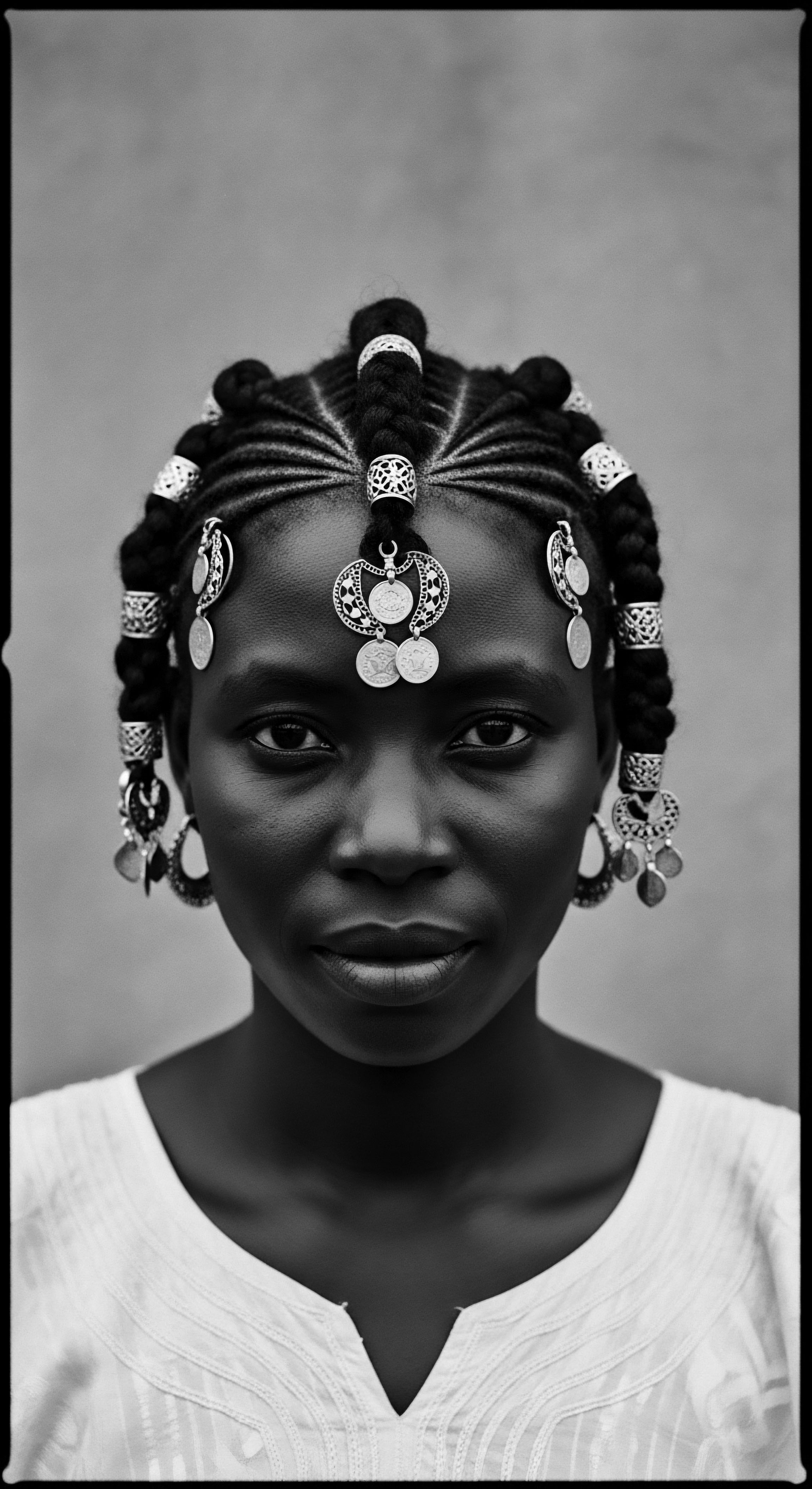
The Tool Kit of Heritage
The tools used for styling and adorning textured hair are themselves artifacts of heritage. From the simple yet effective wooden combs of antiquity to the finely crafted bone pins, each instrument has a story of ingenuity and adaptation. These tools were designed to navigate the unique characteristics of textured hair, enabling the creation of styles that protected the strands while allowing for artistic expression.
Traditional adornments ranged from naturally occurring elements to meticulously crafted pieces.
- Beads ❉ Crafted from wood, clay, glass, coral, or precious metals, beads were (and remain) a universal adornment, used to denote status, wealth, marital readiness, or tribal affiliation across diverse African cultures. Their colors often carried specific meanings, representing aspects like prosperity, spirituality, or ancestry.
- Cowrie Shells ❉ Beyond their historical role as currency, these shells were cherished for their spiritual significance, symbolizing prosperity, fertility, protection, and connection to the divine. They were frequently incorporated into braids, particularly among the Fulani people.
- Gold and Silver Discs ❉ Especially prominent in regions like Nubia and among the Fulani, these precious metals in adornments conveyed immense wealth, royal status, and a connection to solar deities or ancestral spirits.
- Ivory and Bone ❉ Carved into pins, combs, or decorative elements, these materials often held spiritual significance, linking the wearer to animal spirits or representing strength and longevity.
The application of these adornments was often a skilled practice, requiring precision and patience. It was a craft passed down through generations, ensuring the continuity of these visual narratives. The understanding of how a specific bead type interacted with a particular braid pattern, or the ceremonial timing for adding a certain shell, was not incidental; it was learned knowledge, preserved and transmitted through hands-on practice within the familial and communal sphere.

Relay
The journey of textured hair adornments is a powerful relay, a transmission of cultural meaning across continents and centuries, surviving profound historical disruptions. The Transatlantic Slave Trade represented a deliberate attempt to sever the connection between enslaved Africans and their heritage, often beginning with the forced shaving of heads upon arrival in the Americas. This act aimed to strip identity and dehumanize, but it failed to erase the inherent wisdom and cultural memory embedded in hair practices.
Instead, the adornments became a silent yet potent assertion of identity, a thread of continuity in a foreign land. This enduring connection highlights the resilience of a people determined to maintain their ancestral ties.

Resistance and Reclamation through Adornment
During the transatlantic slave trade and in colonial societies, hair adornments, particularly in conjunction with certain styles, became a covert means of communication and resistance. One of the most compelling instances involves the use of Cornrows, or “canerows” as they were sometimes known. These tightly braided rows, practical for daily life, also served as a discreet method of encoding messages. In regions like Colombia, enslaved individuals braided their hair with intricate designs that functioned as maps, indicating escape routes or safe houses.
This historical example, documented by scholars such as Ayana Byrd and Lori Tharps (2001), powerfully illuminates the capacity of hair adornments to carry not just beauty but also vital information and the spirit of defiance. The subtle arrangement of beads, shells, or even simple knots could signify alliance, warning, or a path to freedom.
The persistence of hair adornment practices in the diaspora speaks volumes about the determination to reclaim and preserve identity. As direct access to traditional materials and tools was often limited, ingenuity flourished. Enslaved individuals adapted, utilizing whatever was at hand—bacon grease for conditioning, cornmeal as dry shampoo, and even sheep fleece carding tools as combs.
This spirit of adaptation extended to adornments, with new materials being incorporated while the underlying cultural meanings were fiercely guarded and passed down. The very act of adorning hair in traditional ways became a quiet rebellion against attempts at cultural erasure, a visible link to a vibrant past.

How Did Adornments Shift in the Diaspora?
The aesthetic and symbolic landscape of hair adornments evolved in the diaspora, often influenced by new materials and social realities, yet always anchored by the deep wellspring of African heritage. Early on, the focus was on retaining what was possible from ancestral practices. Over time, as Black communities established themselves, adornments continued to serve as markers of identity, wealth, and community affiliation, even as their forms adapted. In more contemporary contexts, beaded hair styles became a powerful statement of Black pride and beauty during the Civil Rights and Black Power movements of the 1960s and 70s.
Figures like Miriam Makeba, the renowned South African singer, boldly wore beads in the Xhosa tradition during international performances, making a global statement about African heritage. This modern reclamation illustrates a continuous thread connecting past practices to present-day expressions of self and collective identity.
Adornments act as enduring symbols of resistance and cultural continuity, silently affirming heritage through turbulent histories.
The cultural relay of hair adornments also involved a dynamic interplay between tradition and innovation. While traditional motifs and materials retained their significance, new artistic expressions emerged. This meant that while a Cowrie Shell might always speak to prosperity and protection, its placement or combination with other materials could take on contemporary meanings within a continuous conversation about heritage. The ability to adapt while preserving core meaning is a testament to the living nature of these traditions.

Connecting Ancestral Knowledge and Modern Understanding
Modern scientific understanding of textured hair’s unique properties often validates the ancestral care practices that accompanied adornment. For instance, the understanding of how tightly coiled hair is prone to dryness and breakage underscores the wisdom behind traditional oiling rituals or protective styles that minimize manipulation. The practice of oiling the scalp and strands, a widespread ancestral ritual, now finds resonance in the scientific emphasis on scalp health and moisture retention for textured hair.
Consider the ingenuity of ancient hair ornaments from a scientific perspective. Some early Nubian hair ornaments were crafted from glazed quartz beads, a testament to sophisticated craftsmanship that combined aesthetic beauty with material science. These beads, often blue, held specific symbolic significance, possibly linked to lunar deities or other spiritual beliefs. This blend of practical application and symbolic meaning highlights how ancestral knowledge was deeply intertwined with an intuitive understanding of materials and their properties.
- Protective Styling ❉ Many traditional styles, such as braids, twists, and locs, often enhanced with adornments, serve to protect the hair from environmental damage and reduce manipulation, a principle now championed by modern hair science for maintaining textured hair health.
- Natural Ingredients ❉ The historical use of plant-based oils, butters, and herbs in traditional hair care often aligns with modern dermatological understanding of what supports scalp health and strand integrity. These were frequently applied during the process of styling and adorning.
- Communal Care’s Impact ❉ The social aspect of hair care, where multiple hands work on a single head, could also be seen through a modern lens as a form of distributed knowledge and therapeutic interaction, reducing individual burden and reinforcing positive self-image within a supportive community.
The ongoing dialogue between ancestral wisdom and contemporary science reveals a profound continuity. Modern research does not dismiss ancient practices; it often provides a deeper explanation for their efficacy, thereby enriching our appreciation for the intellectual depth of our ancestors. Textured hair adornments, in this context, are not merely decorations; they are living artifacts of this knowledge, carrying centuries of practical wisdom and cultural significance forward.
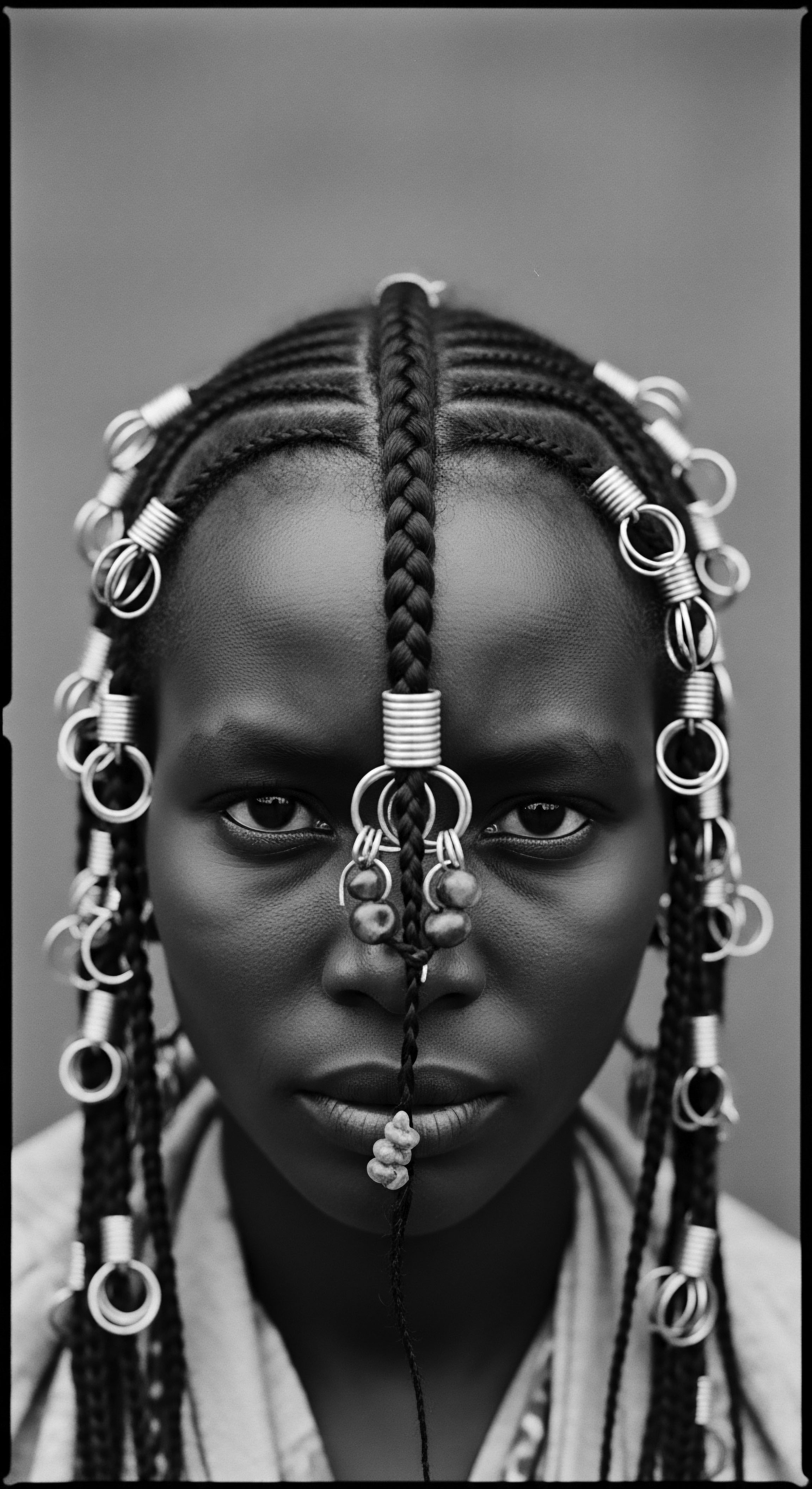
Reflection
As we close this exploration into the cultural meanings behind textured hair adornments, we are left with a powerful realization ❉ a strand of hair is never simply a strand. It is a living filament, a recipient and transmitter of heritage, wisdom, and story. From the foundational echoes of ancient practices to the resilient spirit of contemporary expressions, adornments have been steadfast companions on this journey. They are visual articulations of identity, silent declarations of belonging, and vibrant testimonies to the enduring power of Black and mixed-race cultures.
The adornments we see today—the carefully placed Beads, the gleaming Cowrie Shells, the wraps, the pins—are not mere embellishments. They are symbols of resilience, innovation, and a deep, abiding connection to ancestral roots. They are reminders that even in the face of immense adversity, cultural memory persists, passed down through the gentle touch of hands styling hair, through whispered stories, and through the very materials chosen for embellishment. Each adornment carries the weight of history, the joy of celebration, and the promise of continuity.
Our understanding of what adornments signify is not static; it is a living, breathing archive, constantly being added to, reinterpreted, and celebrated by new generations. This dynamic exchange between past and present ensures that the soul of a strand remains vibrant, forever connecting us to the profound legacy that resides within textured hair. The cultural meaning is not confined to history books; it lives in every twist, every braid, and every beautifully adorned crown that walks through the world, a testament to an unbroken lineage of beauty, strength, and identity.
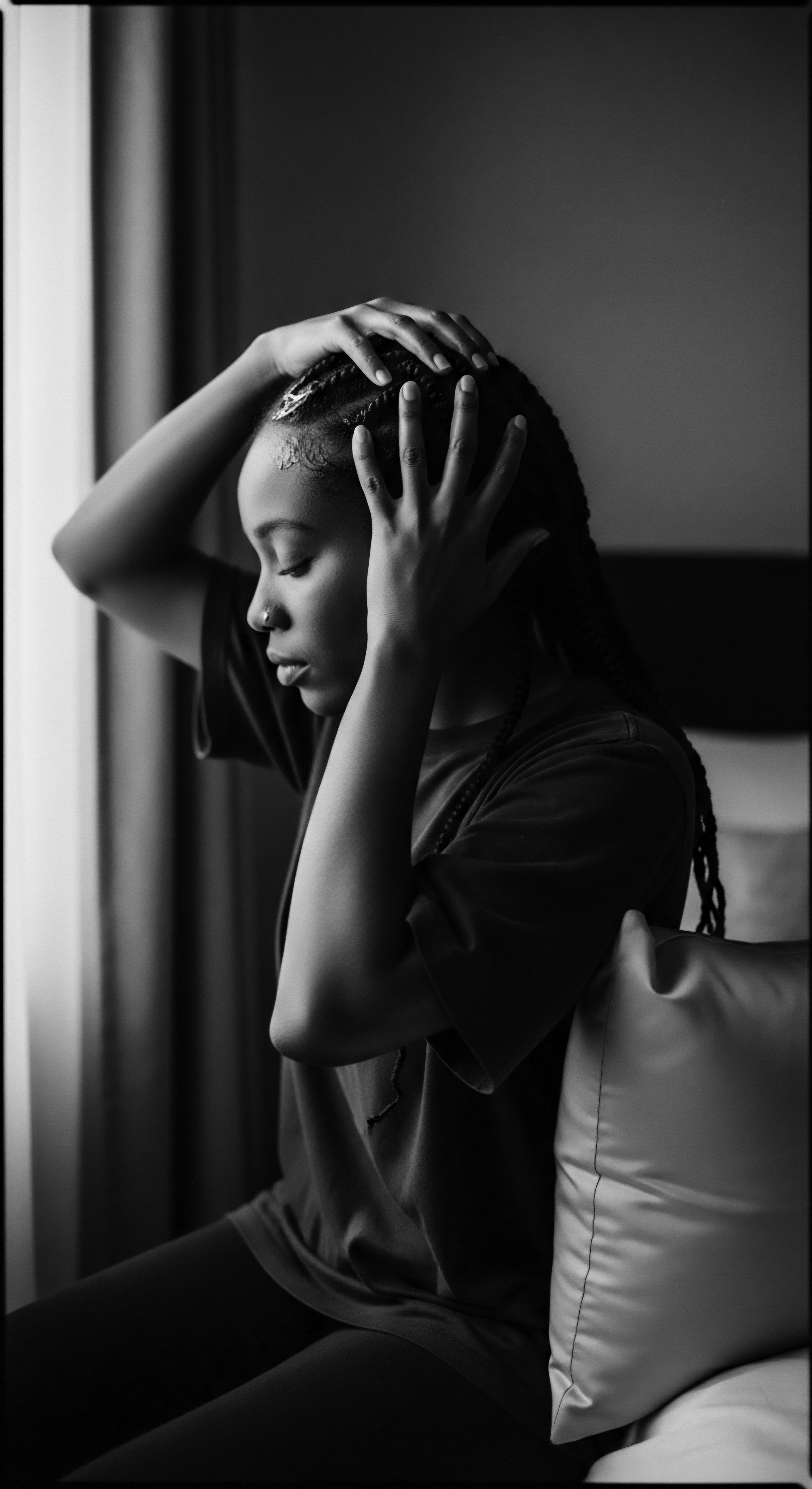
References
- Byrd, Ayana, and Tharps, Lori L. Hair Story ❉ Untangling the Roots of Black Hair in America. St. Martin’s Press, 2001.
- Robins, Gay. The Art of Ancient Egypt. Harvard University Press, 1997.
- Thompson, Robert Farris. Flash of the Spirit ❉ African and Afro-American Art and Philosophy. Vintage Books, 1984.
- Gale, R. T. M. and others. “The Ancient Origins of Hair in Ancient Civilizations.” Journal of Archeological Science, vol. 32, no. 1, 2005, pp. 1-15.
- Nubia ❉ Jewels of Ancient Sudan from the Museum of Fine Arts, Boston. Museum of Fine Arts Publications, 2022.
- Ogbeide, Uyi E. “The Significance of Traditional Hairdressing among the Edo People of Nigeria.” African Arts, vol. 45, no. 3, 2012, pp. 46-55.
- Sogoba, Mia. “The Cowrie Shell ❉ Monetary and Symbolic Value.” African Arts, vol. 40, no. 4, 2007, pp. 74-85.
